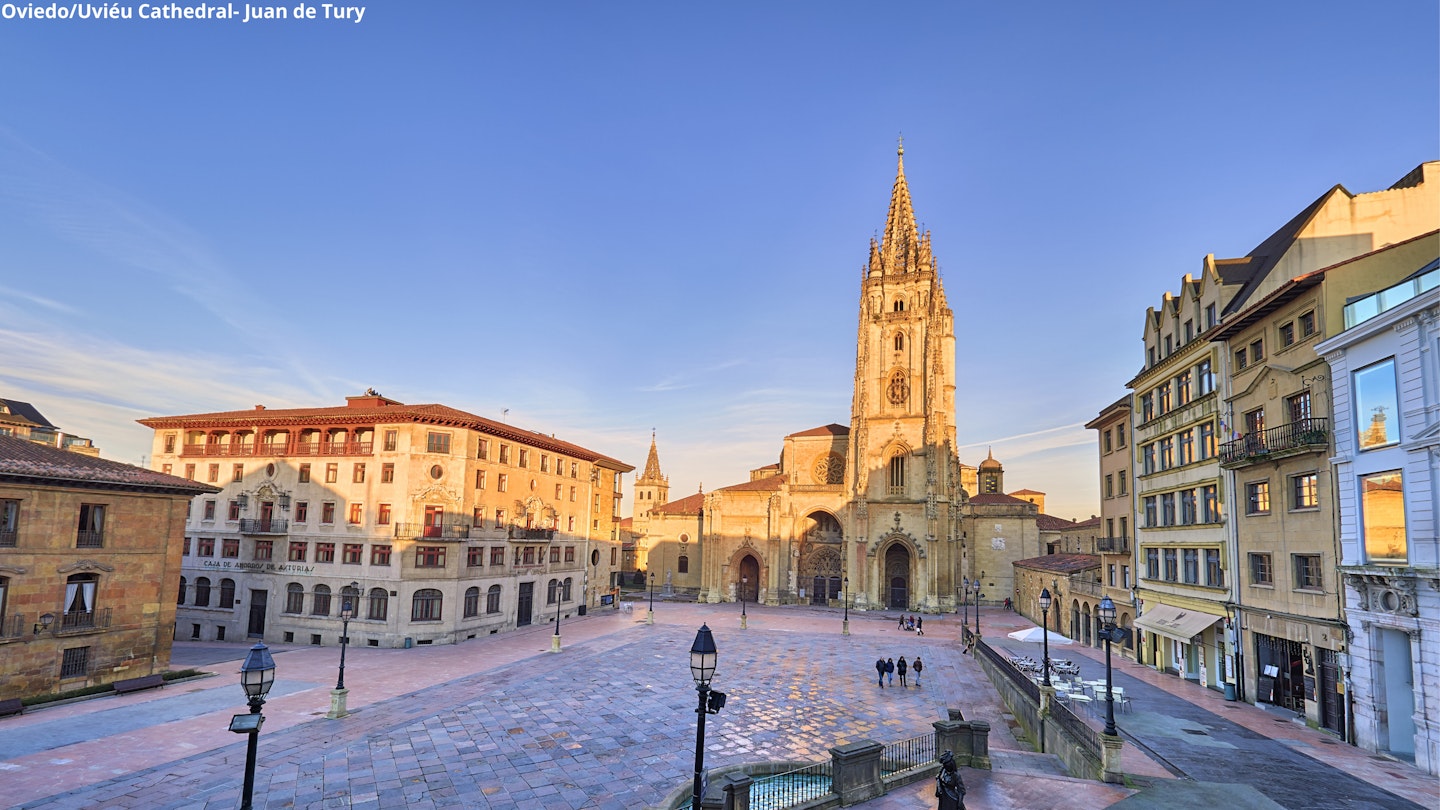
Walking the Camino de Santiago, or the Way of St James, is a cherished dream for many walkers. It’s the world’s most famous pilgrimage; a chance to connect with spirituality, an escape from the pressures of the modern world. And the friendships you form with your fellow pilgrims, or peregrinos, may just last a lifetime. Although the main aim is to cross northern Spain to reach the city of Santiago de Compostela, there are many established routes to choose from. But very few of those routes can offer the spectacular blend of scenery, heritage and natural history of the Camino Primitivo (Original Way) and the Camino de la Costa (Way of the Coast). Both of these age-old paths have wonderful sights and warm welcomes, because they both pass through the region of Asturias – hailed as Spain’s Natural Paradise. Lying in the lush, fertile landscapes of north west Spain, with the city of Oviedo/Uviéu at its heart, Asturias has an immense variety of landscapes, stretching from the mountainous Picos de Europa National Park to the verdant valleys of Fuentes del Narcea, Somiedo and Redes. The region boasts seven UNESCO biosphere reserves and a near-infinite variety of protected wildlife species. And winding through these landscapes are these two extraordinary Camino trails, each rich in history.

The Primitivo is the oldest of the known Camino routes, and it has a special place in the story of Asturias because it honours the ninth-century Asturian king Alphonso II, who is reputed to be the first person ever to have made the pilgrimage. He trod the path after hearing that the tomb of the apostle St James had been discovered in a place that would become the city of Santiago de Compostela. By walking to see it for himself, he established a tradition that countless pilgrims have followed in the centuries since. The route begins at the cathedral of San Salvador in Oviedo/Uviéu and heads west, passing charming little villages packed with their own legends and traditions, over the course of seven days. After that, the trail leaves Asturias to continue on its way towards Santiago. While the Primitivo route explores the interior beauty of Asturias, Camino Primitivo counts with 13 stages between Oviedo/Uviéu and Santiago,the Camino de la Costa (also known as the Camino del Norte or Northern Way) hugs tightly to the northern coast, offering sensational views as you crest clifftops and explore the hidden coves and bays between Ribadedeva in the east and Castropol and Vegadeo in the west. Both routes also offer some key benefits over the more southerly Camino routes. The first is quietness: the two are a lot less crowded than the better-known routes to the south. And the second is climate. Even in summer, Asturias enjoys a cooler climate thanks to its forests and its coastline. So while they’re still balmy and warm, the Primitivo and Coastal routes are a lot more shaded and temperate than the routes further south, making for more pleasant walking.

Each route is well served by a network of welcoming hotels, hostels and pilgrim lodgings, all marked with the ever-present scallop symbol of the Camino. The Asturias tourism board goes further than most, with helpful websites dedicated to helping you plan the perfect itinerary. The helpfulness reflects the pride felt by modern day Asturians: this is a land and a culture that was built around its natural environment, and its people are rightly proud of the way it has been nurtured and protected over the centuries. So, whichever pilgrimage route you choose – or alternatively, if you just want to explore the region’s delights in their own right – a journey through Asturias is not just a spiritual walk, but a spectacular one too.

Useful links
For general information about the region, visit www.asturiastourism.co.uk
For specific information about pilgrim lodgings, go to www.asturiastourism.co.uk/ StJamesWay/PilgrimsLodgings
For a guide on ‘The Way of St James’, go to https://www.turismoasturias.es/documents/11022
For services and hotels for pilgrims, visit www. peregrinosporasturias.com
